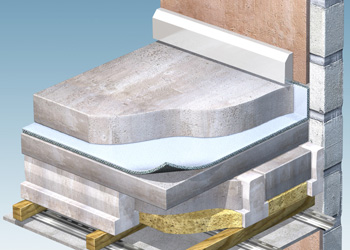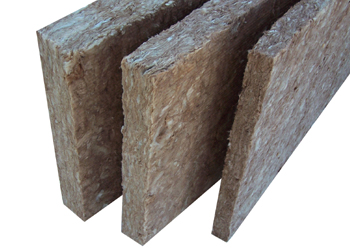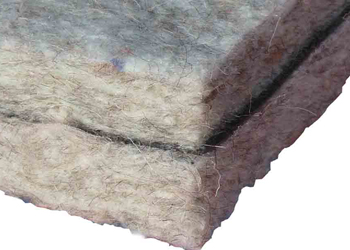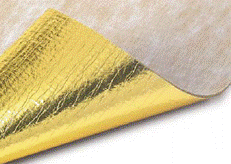Sound Proofing a Floor
Loud noise is always a problem that can be heard through floors of flats and houses and is always more of a nuisance when there is no background noise to help mask it within your own home. This is particularly evident at night when you may be in your bedroom and can clearly hear noise from above or below. The noises may not be loud and you may not notice them during the day but they can be annoying at night and can keep you awake. However, everyday noise such as normal speech and television/radio volumes should not be heard during the daytime and the current Part E Regulations for noise control through separating floors in newly created flats and houses have been introduced to address this.
For noise problems through any wall, we can offer a range of sound proofing products that can provide simple solutions without the need to lift floor boards, or a more professional solution that will entail installing sound insulation beneath the floor boards. Before any sound insulation is installed, it needs to be determined what type of noise is being experienced. Is it airborne or impact? Airborne noise can be the type emitted by speech or music whereas impact noise is as it suggests, noise created by footfalls or furniture being dragged across hard floors. Impact noise is also structurally borne sound that can travel up and through walls or directly down through floors whereas airborne sound is usually heard directly through a floor.
Sound proofing TIMBER SUSPENDED Floors
To address impact noise through a floor, either a soft insulation should be bonded to the floor or a floating floor should be installed and is what is required for all newly built and converted flats today to meet Part E compliance.
Before we go on to talk about soundproofing a floor, we should have a look at the existing floor construction. In timber suspended floors, squeaking floorboards are always an annoying problem and are usually easy to deal with. Squeaking floors are caused by movement of the floorboards rubbing against each other or against the joists on which they are fitted. There can be several reasons for this but is usually due to the fixings becoming loose.
These are usually nails that have worked loose and can be addressed by installing strategically placed screws to tighten the boards so they no longer squeak when walked over. If it is at all possible, it is always worth lifting any existing flooring to install Acoustic Mineral Wool or better still SoundBlocker Quilt between the joists to improve the sound insulation of the floor and should be used as part of any soundproofing solution being installed on top of the floor boards.
This will give an immediate 2-4dB improvement in both airborne and impact sound before any other work is carried out.
The floor can then be replaced and screwed down to ensure it is secure and does not squeak. With square edged floorboards, noise leakage through the joints can be a problem. A more traditional way to address this is to cover the floor with hardboard which should be glued and screwed, a very time consuming exercise.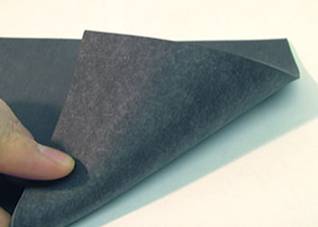
An easier and more effective solution is to use our Soundproofing Mat SBM5 which is a heavy, mineral loaded sound barrier mat and is as effective as using lead of the same mass. SBM5 is simply loose laid across the floor, butt joined wall to wall. For a more permanent solution, the mats can be glued down using our Sta-Stuck special adhesive or nailed using felt nails
Floating floor solution
When the base floor has been sorted, for best results a floating floor should be installed on top of the soundproofing mat. And for this our 10mm thick recycled resilient insulation Acousticel R10 is loose laid over the SBM5 with the joints of the insulation abutted to each other and again installed wall to wall.
A t&g floor of minimum 18mm thickness can then be installed with the joints glued and with a 5mm gap between the floating floor and the surrounding walls. This gap should be sealed with our high density, Flexible Acoustic Sealant. For a greater improvement in sound loss, our high density 19mm tongued and grooved QuietBoard acoustic flooring can be used for the floating floor layer instead and QuietBoard is recommended if a pre-completion sound test is to be conducted to prove compliance with Part E of the Building Regulations.
The above system will not only improve impact noise but will also give a significant airborne noise reduction. Installation of the above will raise the height of the floor by approx. 31mm so it may be necessary to adjust any doors that open across the new floor.
Other sound proofing floor solutions
When upgrading existing flats, sometimes it is not possible to install a floating floor system so other measures have to be considered. It is always worthwhile installing the SoundBlocker Quilt between joists and we have already dealt with this so we will now concentrate on installing a sound proofing solution directly on top of the soundproofing mat instead of the more efficient floating floor system. The simplest way to reduce impact noise is to replace your carpet underlay with our specially developed A10 Acoustic Underlay. This will substantially reduce previously heard impact noise by your neighbours below and replaces normal carpet underlay.
If airborne noise is also a problem, the simplest way to reduce this is to install three layers of our SBM5 Soundproofing Mat onto the floor with the joints of each layer overlapping the layer beneath. These mats should be glued down and as each mat is nominally 2mm thick, the increase in floor height will only be about 6mm.
An alternative is to substitute any carpet underlay with our QuietFloor PLUS acoustic underlay which will reduce both impact and airborne noise and again replaces the normal carpet underlay that would normally be used.
If QuietFloor is used in conjunction with the SBM5 Soundproofing Mat, the noise reduction achieved will be significantly enhanced. Before installing QuietFloor, if not already installed, it is always a good idea to glue or nail down a layer of SBM5 prior to installing the QuietFloor to seal the joints of the existing floor.
Laminate and Hardwood Floors
Laminate and bare floors always create more noise than a carpeted floor for obvious reasons and should be avoided if at all possible. However, if a hard floor surface of any kind is required, it is best installed as a floating floor as already described above. With laminate floors, we would advise installation with our Acoustic Laminate Underlay or the more efficient but thicker QuietFloor PLUS between the existing floor and the laminate.
Vinyl flooring
A vinyl floor is very thin and contributes very little to sound reduction unless it is the ‘cushionfloor’ type that is softer and helps a little in reducing impact noise. The problem with insulating a vinyl floor is usually because of its location (kitchens and bathrooms) and because it is too thin to install on top of an efficient insulation such as QuietFloor products. 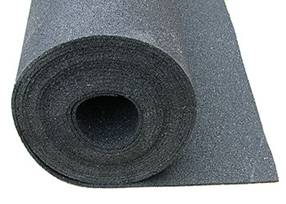
So we have developed a completely new recycled sound insulation called Linoroll 5 which is ideal when a more efficient reduction of impact noise is required for installation beneath any vinyl or Lino.
For a more effective result and also to help reduce airborne noise nuisance, we would suggest using Mineral Wool or our more effective SoundBlocker Quilt as mentioned previously in the cavity space between the joists and with SBM5 Soundproofing Mat on top of the floorboards before laying the Linoroll and vinyl flooring to complete the job. The more layers of SBM5 that are used the more efficient the airborne insulation factor will be.
Sound Insulating Concrete separating Floors
Due to their additional mass, concrete floors do not usually present the same airborne noise problems as you would get with the lighter timber suspended floors. Airborne noise problems associated with concrete floors are usually attributable to noise flanking up and down the structural walls and the only way to address this problem is to soundproof the affected walls with a thin soundproofing material such as our 20mm thick M20AD.
Impact noise is the usual problem associated with concrete floors and is usually experienced with floors that have not had resilient insulation incorporated within it. The easiest way to get over this is to glue to the surface an acoustic underlay such as our 10mm A10 or 15mm QuietFloor instead of the usual carpet underlays. If a hard floor surface is required such as timber then these should be installed as detailed under the timber suspended floor section above. For laminate floors, a much better result can be achieved if QuietFloor PLUS is used instead of the Acoustic Laminate Underlay mentioned earlier.
Ceramic tiles are more difficult to effectively insulate because installation on top of any resilient layer will result in cracking of the joints and possibly tiles. If installation of sound insulated ceramic tiles is required onto an existing concrete floor, contact our technical dept. for specialist advice. For more information on our products go to Soundproofing prices or ring Sound Service (Oxford) Ltd directly on 0845 363 7131 charged at local call rate for landlines or 01993 704981 from mobiles.
Written by Stephen Young
© Sound Service (Oxford) Ltd 2003


